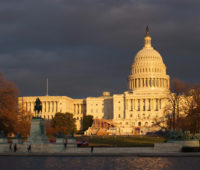Over the last 30 years, party polarization has increased, making bipartisan compromise less attainable. In this essay, Lynda Powell identifies the electoral and institutional factors influential in determining the extent to which individual legislators spend time forming cross-party rather than within-party coalitions to pass legislation. Focusing her analysis on individual legislator behavior, she introduces a new measure of legislative activity—coalition building bipartisanship—defined as the difference in time legislators devote to cross-party versus within-party coalition building to pass legislation. Overall, Powell finds that in state capitols as well as Congress, as time goes on, legislators spend more time building within-party coalitions, rather than bipartisan coalitions.














